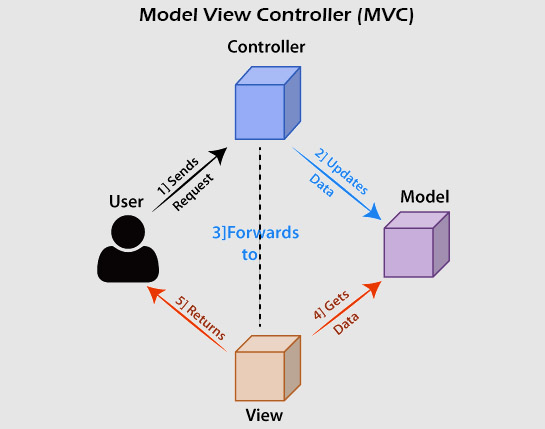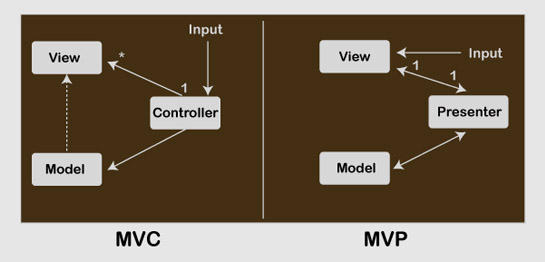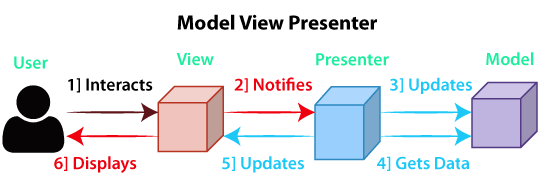MVC : MVC stands for Model View Controller. It is an architectural pattern that is used to develop Java Enterprise Applications. It splits an application into three logical components i.e. Model, View, and Controller. It separates the business-specific logic (Model component) from the presentation layer (View component) from each other.
The model components contain data and logic related to it. The View component is responsible for displaying model objects inside the user interface. The Controller receives the input and calls model objects based on handler mapping. It also passes model objects to views in order to display output inside the view layer.

MVP : MVP stands for Model View Presenter. It is derived from the MVC architectural pattern. It adds an extra layer (known as indirection) to the architectural pattern that splits the View and Controller into View and Presenter. The role of Controller is replaced with a Presenter. It exists at the same level as View in MVC. It contains UI business logic for the View. The invocations received from the View directly sends to the Presenter. It maintains the action (events) between View and Model. The Presenter does not directly communicate with the View. It communicates through an interface.
The major difference between MVC and MVP architectural pattern is that in MVC architectural pattern Controller does not pass the data from the Model to the View. It only notifies the View to get the data from the Model itself.
While in MVP architectural pattern the View and Model layers are connected with each other. The presenter itself receives the data from the Model and sends it to the View to show.
Another difference is that MVC is often used in web-frameworks while MVP is used in app development.



